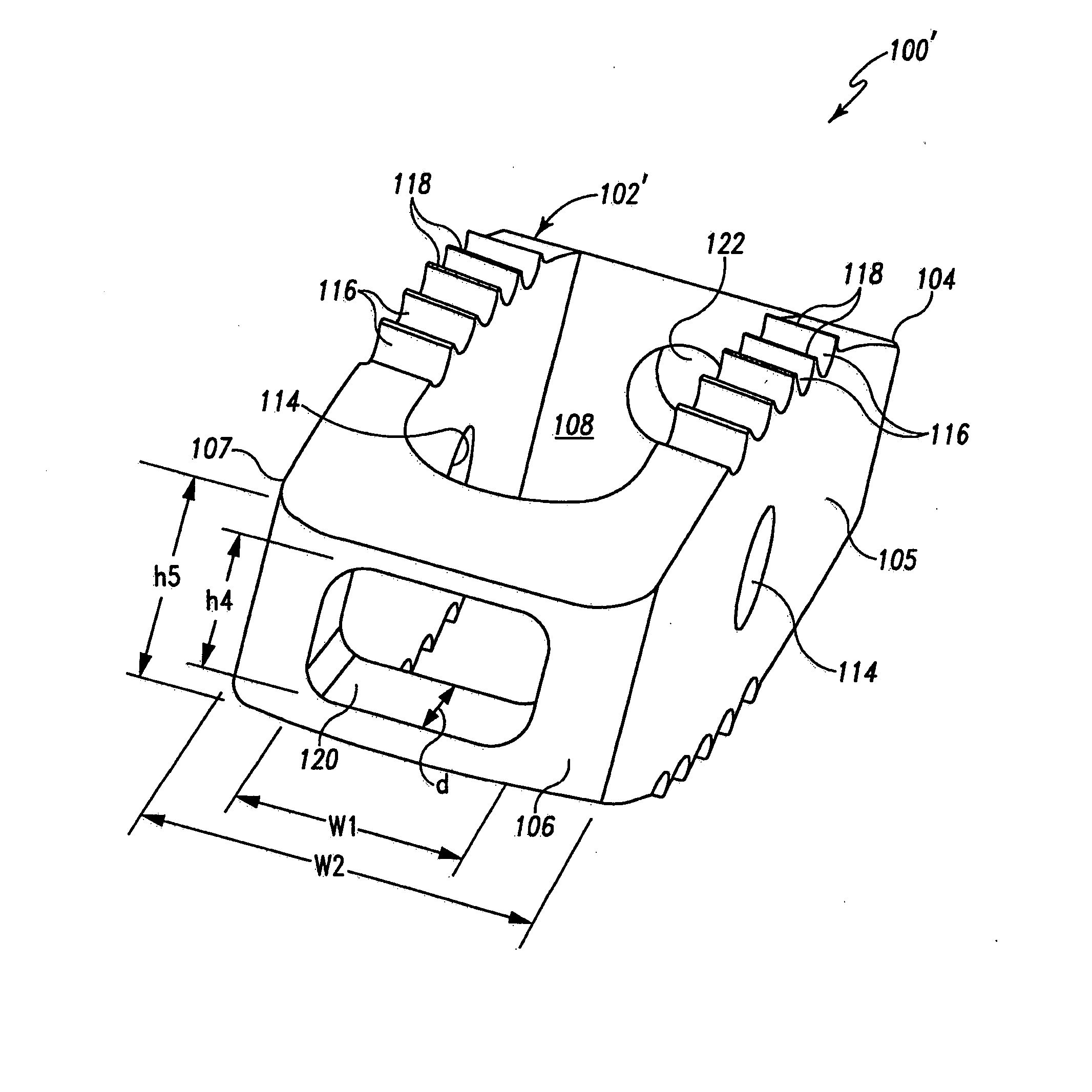Interior connecting interbody cage insertional tools, methods and devices
a technology of interbody cages and insertion tools, applied in the field of interbody spinal systems, can solve the problems of increasing the time and complication of surgery, affecting the accuracy of insertion, and the limited surface area of the interbody device, so as to achieve more accurate placement of the interbody cage, less likely to violate, and safer
- Summary
- Abstract
- Description
- Claims
- Application Information
AI Technical Summary
Benefits of technology
Problems solved by technology
Method used
Image
Examples
Embodiment Construction
[0027] For the purpose of promoting an understanding of the principles of the invention, reference will now be made to the embodiments illustrated in the drawings and specific language will be used to describe the same. It will nevertheless be understood that no limitation of the scope of the invention is thereby intended. Any alterations and further modifications in the described embodiments, and any further applications of the principles of the invention as described herein are contemplated as would normally occur to one skilled in the art to which the invention relates.
[0028] Insertional tools, methods and devices for interbody stabilization are provided that facilitate control and positioning of the leading end of the cage to be inserted. Placement of interbody cages can be more accurate, efficient, and less likely to violate the structural integrity of the interbody cage. Insertional tools and cages are configured so that the inserter tips fit into and positively lock with the...
PUM
 Login to View More
Login to View More Abstract
Description
Claims
Application Information
 Login to View More
Login to View More - R&D
- Intellectual Property
- Life Sciences
- Materials
- Tech Scout
- Unparalleled Data Quality
- Higher Quality Content
- 60% Fewer Hallucinations
Browse by: Latest US Patents, China's latest patents, Technical Efficacy Thesaurus, Application Domain, Technology Topic, Popular Technical Reports.
© 2025 PatSnap. All rights reserved.Legal|Privacy policy|Modern Slavery Act Transparency Statement|Sitemap|About US| Contact US: help@patsnap.com



